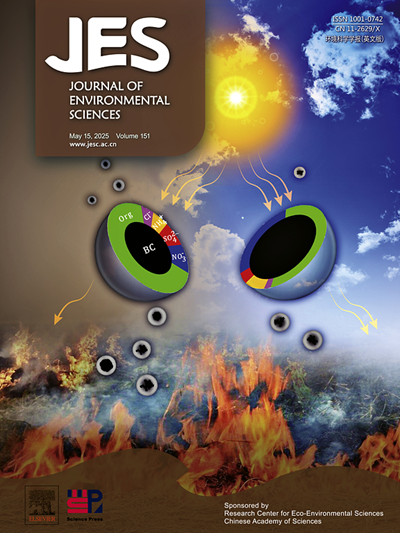Unlocking the bioremediation potential of adapted Desulfovibrio desulfuricans in acidic low-temperature U-contaminated groundwater
IF 5.9
2区 环境科学与生态学
Q1 ENVIRONMENTAL SCIENCES
引用次数: 0
Abstract
Addressing the global challenge of uranium (U)-contaminated groundwater requires innovative bioremediation strategies. This study investigates Desulfovibrio desulfuricans, a neutrophilic and mesophilic sulfate-reducing bacteria (SRB) strain optimized for low-temperature (15 °C) and acidic (initial pH 4) conditions, to validate its bioaugmentation potential for uranium decontamination in groundwater. Our research aimed to assess its efficacy in treating U-contaminated groundwater and elucidate the optimal growth conditions for this strain in acidic and sulfate-enriched environments. We found that D. desulfuricans was phylogenetically distinct from the native microbial community in acidic U-contaminated groundwater, while it maintained appreciable activity in sulfate reduction under contaminated groundwater conditions after accumulation. Acid-tolerant D. desulfuricans removed 75.87 % of uranium and 30.64 % of sulfate from acidic U-contaminated groundwater (pH 4.0) at 15 °C within 14 days. Furthermore, we explored the optimal sulfate concentration for bacterial growth, which was found to be 2000 mg/L, and an elevated Fe2+ concentration from 100 to 1000 mg/L increasingly stimulated sulfate-reducing activity. These findings provide a novel insight into the application of neutrophilic and mesophilic SRB in bioremediation of acidic and low-temperature groundwater after accumulation and underscore the feasibility of bioremediation by using exogenously pure SRB.

求助全文
约1分钟内获得全文
求助全文
来源期刊

Journal of Environmental Sciences-china
环境科学-环境科学
CiteScore
13.70
自引率
0.00%
发文量
6354
审稿时长
2.6 months
期刊介绍:
The Journal of Environmental Sciences is an international journal started in 1989. The journal is devoted to publish original, peer-reviewed research papers on main aspects of environmental sciences, such as environmental chemistry, environmental biology, ecology, geosciences and environmental physics. Appropriate subjects include basic and applied research on atmospheric, terrestrial and aquatic environments, pollution control and abatement technology, conservation of natural resources, environmental health and toxicology. Announcements of international environmental science meetings and other recent information are also included.
 求助内容:
求助内容: 应助结果提醒方式:
应助结果提醒方式:


